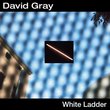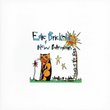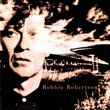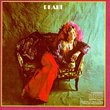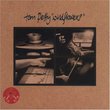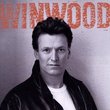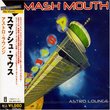| All Artists: The Incredible String Band Title: 5000 Spirits / Hangman's Beautiful Daughter Members Wishing: 4 Total Copies: 0 Label: Collector's Choice Release Date: 8/13/2002 Genres: Folk, International Music, Pop, Rock, Classic Rock Styles: Traditional Folk, British & Celtic Folk, Folk Rock, Psychedelic Rock Number of Discs: 2 SwapaCD Credits: 2 UPCs: 617742028928, 0617742028928 |
Search - The Incredible String Band :: 5000 Spirits / Hangman's Beautiful Daughter
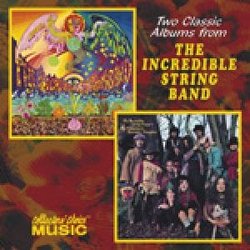 | The Incredible String Band 5000 Spirits / Hangman's Beautiful Daughter Genres: Folk, International Music, Pop, Rock, Classic Rock
2CD set combines '5000 Spirits Or The Layers Of The Onion' with 'The Hangman's Beautiful Daughter'. Highlights include 'Chinese White', 'No Sleep Blues' and 'Nightfall.' Originally released in 1967 & 1968. |
Larger Image |
CD DetailsSynopsis
Album Description 2CD set combines '5000 Spirits Or The Layers Of The Onion' with 'The Hangman's Beautiful Daughter'. Highlights include 'Chinese White', 'No Sleep Blues' and 'Nightfall.' Originally released in 1967 & 1968. Similarly Requested CDs
|
CD ReviewsTWO OF THEIR MOST IMPORTRANT RECORDINGS TOGETHER Larry L. Looney | Austin, Texas USA | 05/13/2003 (5 out of 5 stars) "With the release of their eponymous first album, the ISB made it know to the music listening public that a new force had arrived - one which would inject some energy and vitality into the folk music scene in the UK and the world. With the appearance of this album, THE 5,000 SPIRITS or THE LAYERS OF THE ONION, there could be little doubt that something special had been born. It was released originally in 1967 - at the height of the psychedelic music movement, filled with rapidly expanding imaginations and creativity at work, breaking new ground right and left. I feel it stands head and shoulders above most other releases of its day, in many ways, and should be regarded as a classic for its lyrical content alone. Musically, the ISB were going places - and drawing from sources - that other artists would only dare to touch in years to come. I believe it was their long-time producer, Joe Boyd, who once said that the ISB was the original `world music' group - he couldn't have stated it better.The set opens with Mike's `Chinese white' - the bowed gimbri played by Robin on this track lets the listener know right away that things have `expanded' a bit since the band's 1966 release. `The bent twig of darkness grows the petals of the morning', sings Mike - a beautiful image worthy of traditional Asian poetry. Mike's other songs on this album run the gamut from love songs (`Painting box' and the eternally lovely `Gently tender') to humorous looks at our place in the world (`Little cloud' and `The hedgehog's song') to a song offering encouragement to the listener to reach for his full potential (`You know what you could be'). The seriousness of some of his topics is gently offset by a childlike quality that, through the ensuing years, would infuse most of his writing with an innocence that would endear it to his fans.Robin's offerings here are for the most part more serious than Mike's - but there is humor in his writing as well, as is evidenced by `No sleep blues' and the hilarious `Way back in the 1960s'. His `First girl I loved' - covered by Judy Collins as `First boy I loved' on her WILDFLOWERS album - is simply one of the most beautiful songs ever written to a first love, looking back with honesty and tenderness on the gifts exchanged, both physical and emotional. His guitar work on this song is (as always) astonishingly creative and lovely. In 'The eyes of fate', he muses `O who can see in the eyes of Fate all life alone in its chronic pattern?' He is one of the most amazingly talented writers ever to pen a verse.THE HANGMAN'S BEAUTIFUL DAUGHTER is the third album by the ISB, recorded in late 1967 and released in early 1968. Combining instruments and melodies from the far corners of the earth with lyrics unequalled in their day (and rarely since) reflecting on everything from humankind to the natural world, from love to violence, from ancient mysticism to modern realities, the ISB made music like no one else. It spoke - and still speaks - to the heart, the soul, the mind and the body. The album begins with a trio of Robin Williamson compositions, extremely varied in their presentation, but all tied together by myth. 'Koeeoaddi there' mixes images from Williamson's childhood, including imaginings, songs and games shared with his playmates (including Licorice McKechnie). The variegated visions are pulled together by the chant that becomes the refrain: 'Earth, water, fire and air met together in a garden fair - put in a basket bound with skin. If you answer this riddle, you'll never begin'. The third track, 'Witch's hat', is quite simply one of Williamson's most beautiful songs. The visions his words invoke are dark and crystalline, fog-shrouded shapes moving in the woods - the kind of stuff that scares the hell out of kids and grown-ups alike, but which is beautiful at the same time.The album's longest composition, Mike Heron's 'A very cellular song' follows. It's a tour-de-force, encompassing several styles of music and themes - including a West Indian funeral song. His subject is nothing less than the beauty and interconnected nature of life itself, told from the level of a single cell. This has been singled out by many reviewers as not only the high point of this album, but of the band's career as well -- and to be sure, from this period onward, it remains one of their most adventurous, popular pieces. Heron's 'Mercy I cry city' is next - a simple man's troubled view of the confusion we call 'civilization'. Humor and innocence play large roles in these lyrics, as in several of Mike's songs over the years (check out 'Cousin Caterpillar' on their WEE TAM/THE BIG HUGE). Another trio of Robin's songs follow. The first of these, 'Waltz of the new moon', incorporates spiritual images from China, India and the Nordic countries of Europe into a swirling tapestry. Dolly Collins' harp and harpsichord arrangements of this song are especially beautiful. This piece flows effortlessly, seamlessly (and appropriately) into the next tune, 'The water song', another of Williamson's most moving pieces, an ode to the beauty, energy and sacredness of water itself. "Three is a green crown' follows, a beautiful but separate companion to his later work 'Creation' (on CHANGING HORSES), with many mystical references to the process by which the earth was formed, and life appeared and progressed. This is a very hopeful song (I believe), encouraging us to learn all we can about the earth and each other - through knowledge and understanding will come peace: '...the book of life is open to us, there'll be no secrets between us'. Mike Heron's 'Swift as the wind' is next, in which a child's parents scoff at his nightmare visions - but the visions belong to the child, not the parents - and the fear and dread he feels are very real to him. 'Nightfall', a Williamson composition concerning the power of the night and of sleep itself, end the album very fittingly: 'O sleep come to me, you who are night's daughter, and I'll give you my eyes for the colors that rise as time's echoes reflect on your water...O river of sight flow through me, washing thoughts of the day on your waters away...for the morrow that dawns never knew me'. This double-disc package brings together two if the Incredible String Band's most creative and important recordings. It's nice to have them available together at an affordable price." Blake's Legacy in Song Doc Bowery | Abu Dhabi, UAE | 01/05/2003 (5 out of 5 stars) "I've owned, worn out and re-bought both of these albums over the years. If you're interested in inspired mystical poetry, exotic instrumental textures or soaring, highly-ornamented vocals--this is the best of the best. Musicians can learn all kinds of riffs and melodic phrases from these albums. There's some great bluesy and flamenco-esque guitar work, raga-like drones in alternate tunings, undulating rhythms with Moroccan drums and flute styles, spontaneous, chaotic vocal harmonies that somehow fit perfectly, natural water sounds, and some aggressive backing on accoustic bass from Danny Thompson (Pentangle, Donovan, Songhai).The ideas contained in these two seamless sets have a lot in common with the mystical themes found in the writings of Blake, Yeats, Thoreau, Jung and especially in Lao Tzu's book, Tao Te Ching. Putting it another way, if getting to know the root of existence itself is on your list of things-to-do, you might want to consider spending some quality time with these songs. Brilliantly played accoustic music chock-full of meaningful dream words/worlds. The only thing I'm not sure of on some of these new CD releases is this: Have the engineers added sufficient warmth (via sonic maximising, spectral enhancement, etc.) during the process of remastering--going from analog to digital? But hey, it's great to have this stuff available again in any format. This is as significant as Sgt Peppers or Axis Bold As Love. It's that good. Buy it and delve deeply. Then move on to Robin, Mike and Clive's current stuff, via Robin Williamson's Pig's Whisker label. And don't forget The Merry Band's re-releases, too--or Robin's storytelling CDs. Players--don't forget to check out Robin's two instructional books: Fiddle Tunes and The Pennywhistle Book for lots of well-introduced tunes that can fit on any melodic instrument." Two most important albums. Toghether for the first time B. Marold | Bethlehem, PA United States | 06/02/2005 (5 out of 5 stars) "`The 5000 Spirits or The Layers of the Onion' (5000 Spirits) and `The Hangman's Beautiful Daughter' (Daughter) by The Incredible String Band (TISB) in a single package gives you the opportunity to get the two albums which put this band on the 1960's musical map.
The easiest way to point out the company this band was in is to cite a 1968 newspaper review of the `5000 Spirits' album which compared it favorably to the very summit of pop music at that time, the Beatle's epochal `Sergeant Pepper's Lonely Hearts Club Band'. On the one hand, there is no question in my mind that this album is NOT as good as `Sergeant Pepper...'. And yet, we are still listening to both albums today. `The 5000 Spirits or The Layers of the Onion' and that review was strong enough for me to look out for the TISB's next album (Daughter) and I was appropriately rewarded when I first heard this work on vinyl about 35 years ago. For starters, it simply hangs together much better than the earlier album. `5000 Spirits' seems to be just a collection of imaginative songs, most of that are probably considered `novelty songs'. `Daughter' is tied together by several parallel themes, the most important of which is linked to the album title and consists of stories admonitions, and entertainment's for an adolescent girl. The second theme running though most of the songs is the classic ancient elements of earth, air, fire, and water. Oddly enough, these are TISB's second and third albums. The first presented the group as a trio of men, which slimmed down to just Williamson and Heron for the second album, to grow to the pair of men plus a healthy chorus of women and children backing them up on all sorts of oldish instruments. The very best thing about these old albums is that they are so much better than the material Williamson and Heron are doing today. Williamson has largely become the traveling minstrel of Medieval days whose material he transformed into highly original songs for a decade, starting in the late 1960's. It is also appropriate to see these and other albums released in pairs, as TISB did more than their share of double albums, starting with their next release, `Wee Tam & The Big Huge' which puzzled me when they were simultaneously released by Elektra in 1968 as two different albums. See my reviews of the individual albums for more details. Listen and enjoy, Listen and enjoy... " |

 Track Listings (13) - Disc #1
Track Listings (13) - Disc #1